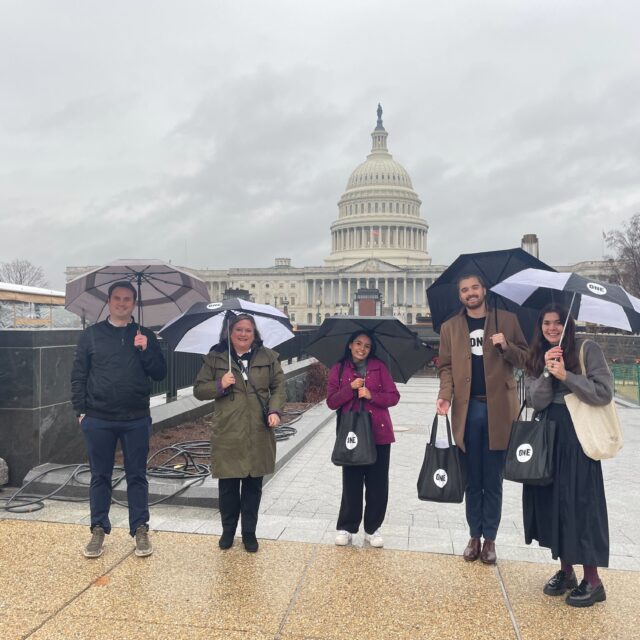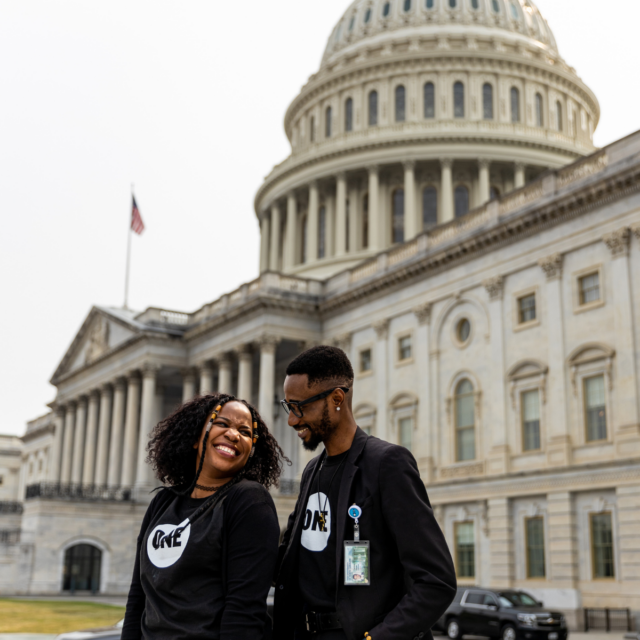HIV/AIDS likely isn’t on the front page of your morning paper—but the crisis is still affecting millions of people worldwide.
Thirty years ago, news of HIV/AIDS swept the world. Unsure of what it was, what caused it, and how to stop it, fear and stigma became hallmarks of the epidemic. While many bought into the stigma, others decided to take action.
5B is a documentary following nurses who worked in the first HIV/AIDS ward in the United States, San Francisco General Hospital. The nurses there took incredible risks, worked tirelessly, and cared for every patient in the ward. 5B dives deep into the lives, challenges, and triumphs of these unrecognized heroes.
The documentary is also helping in the fight against HIV/AIDS today. While in theaters, a portion of the proceeds went to (RED), ONE’s sister organization fighting to end HIV/AIDS. (RED)’s work supports the Global Fund to Fight AIDS, TB and Malaria, which is the second largest donor for HIV/AIDS.
5B is not a film depicting the past—it is a reminder of the crisis we face now. Here are four takeaways from the documentary that are still relevant today:
Stigma gives power to disease
While many of the doctors and nurses in the documentary did not give into stigma, some did. At the beginning of the epidemic, many doctors and nurses were hesitant to treat patients. Some even outright refused to provide treatment.
Two nurses at San Francisco General Hospital sued for the right to wear protective gear with all HIV positive patients. Not only was protective gear unnecessary, it also alienated and scared the patients. A surgeon in the film also refused to operate on patients without knowing their HIV status.
The harm caused by stigma went beyond hospitals. Some elected officials believed false information about the disease or blamed the patients for having it. This slowed research and made it more difficult for health workers to treat their patients.
The fear and stigma surrounding HIV/AIDS othered patients and prevented them from getting the care they needed. Fearing a disease—and, by extension, those who have it—makes it far more difficult to fight back.
Health work goes beyond medical care
5B is focused on the individuals who did not give into fear and instead took action to make a world of difference.
With little information about HIV/AIDS, health workers faced a difficult reality: they could treat symptoms, but could not stop the disease itself. Before treatments for HIV existed, there was almost nothing health workers could do to help their patients survive.
Faced with this daunting circumstance, the nurses of ward 5B shifted their perspective away from the disease, and instead focused on the people. Their focus on humanity and compassion was the driving factor in how they developed the ward.
“You had to get out of the mode that you were here for curing people; and really get into the mode that you were here to care for people,” said Mary Magee, one of the nurses of ward 5B.
Research changes everything
Much of the fear surrounding HIV/AIDS came out of uncertainty over how the disease works. Without knowledge, the disease continued to spread and people continued to die from AIDS-related causes.
As researchers began to better understand how HIV affects the body and how it spreads, methods for prevention and treatment came to light. This knowledge transformed how HIV/AIDS was treated and the trajectory of response efforts.
Vital HIV/AIDS research continues to this day, yielding incredible results. This year alone, the second person ever was cured of HIV—a feat that would’ve seemed impossible 30 years ago. Research completely turned the tide on HIV/AIDS, and it can continue to do so until we see the first AIDS-free generation.
Stories are a powerful tool
Stigma can give power to disease — so how can we combat that? One essential answer is sharing stories and information.
Storytelling has the power to combat stigma with facts, inform people on prevention, and humanise those affected—creating a greater understanding of HIV/AIDS.
Hank Plante, a news reporter in San Francisco during the 1980s, covered the outbreak and the work done in ward 5B. Today, he still believes in the power of sharing these essential stories.
“AIDS has gone into remission in newsrooms,” said Plante at a screening of the documentary. When we stop talking about how serious this is, the world stops taking it seriously.
5B is, in itself, an embodiment of why storytelling is so important. Even today, 30 years later, the stories and information in the documentary provide insights into what we need to end AIDS for good.
On October 10th, world leaders and global health advocates will have the chance to put these lessons into action at the Global Fund Replenishment. Though we’ve come a long way, it’s important to remember that the fight isn’t over and AIDS is still a crisis. We cannot forget these lessons until everyone, everywhere, is living an HIV-free life.
Are you inspired to continue the fight against HIV/AIDS? Add your name to #StepUpTheFight against AIDS.



